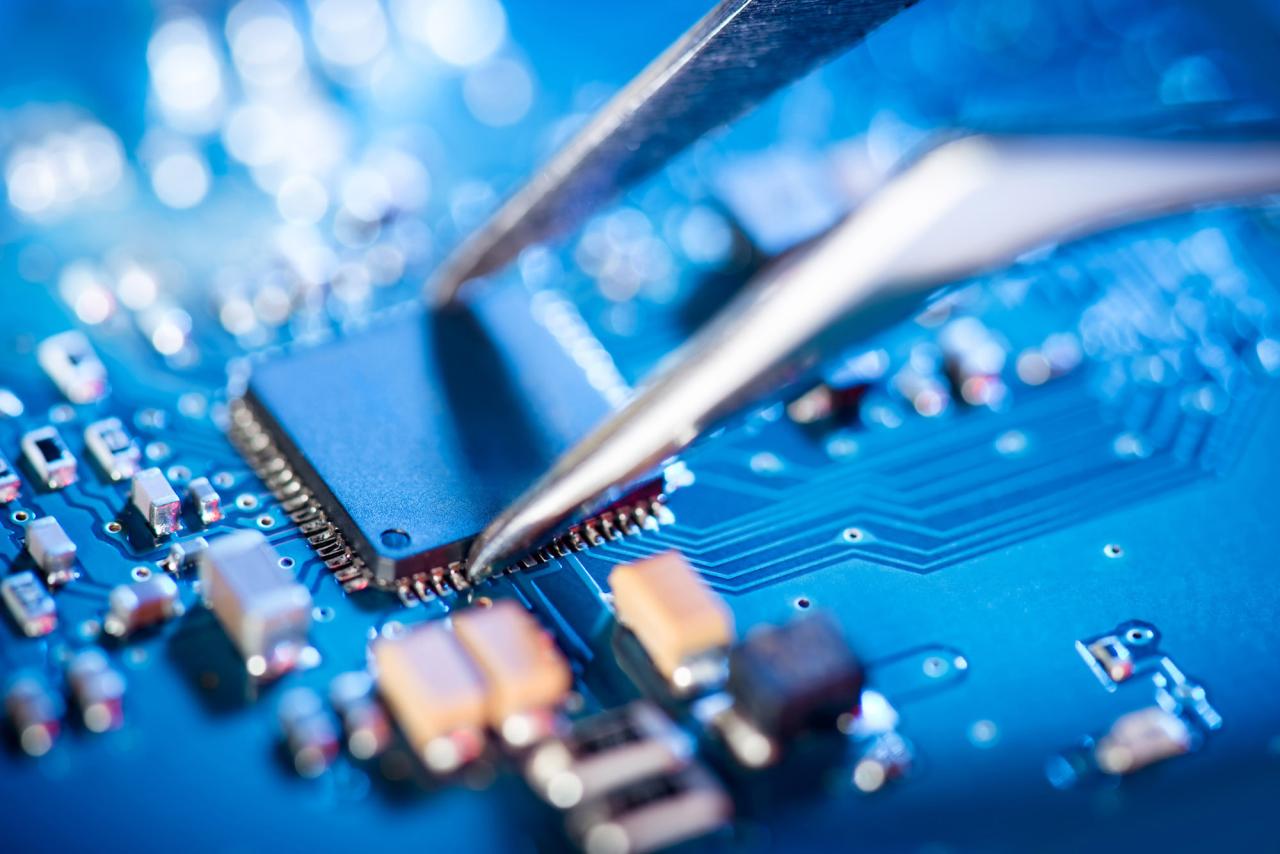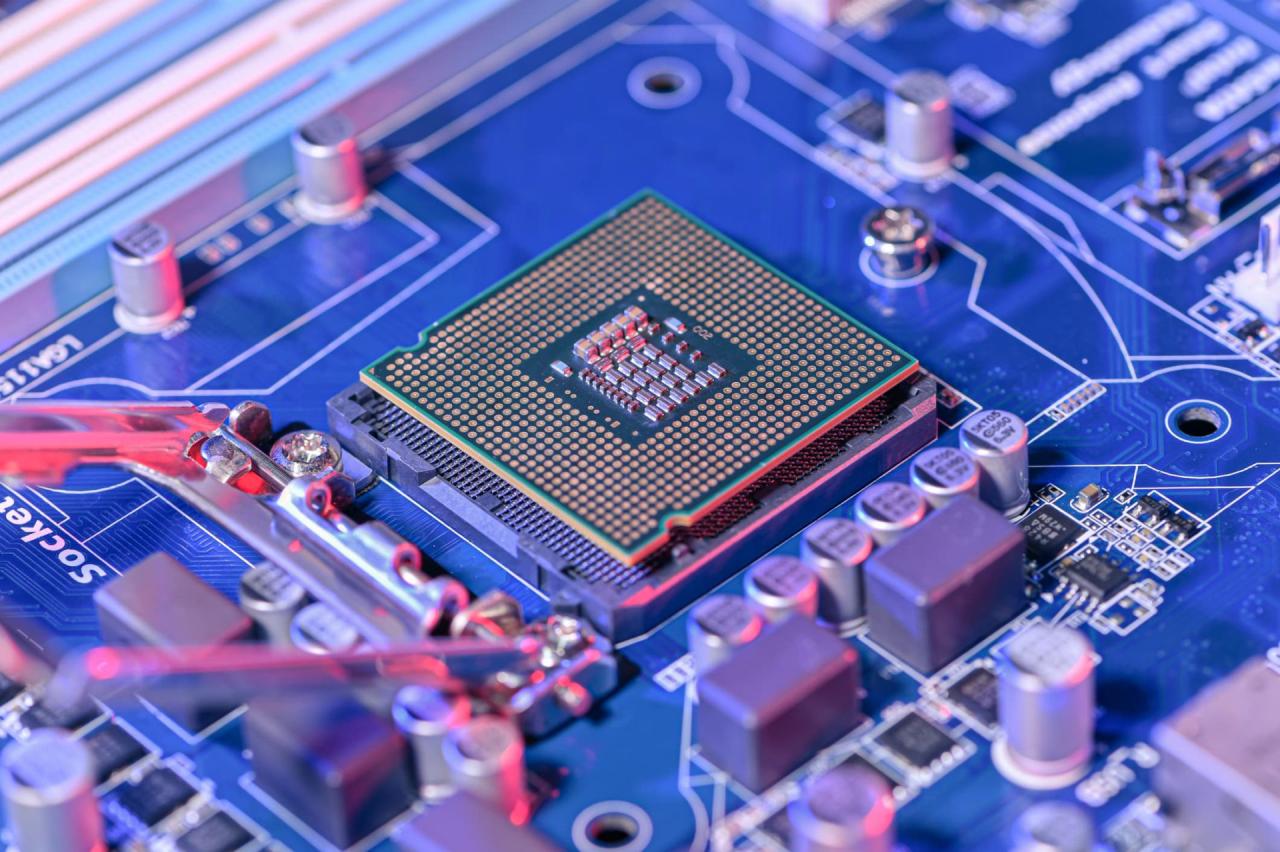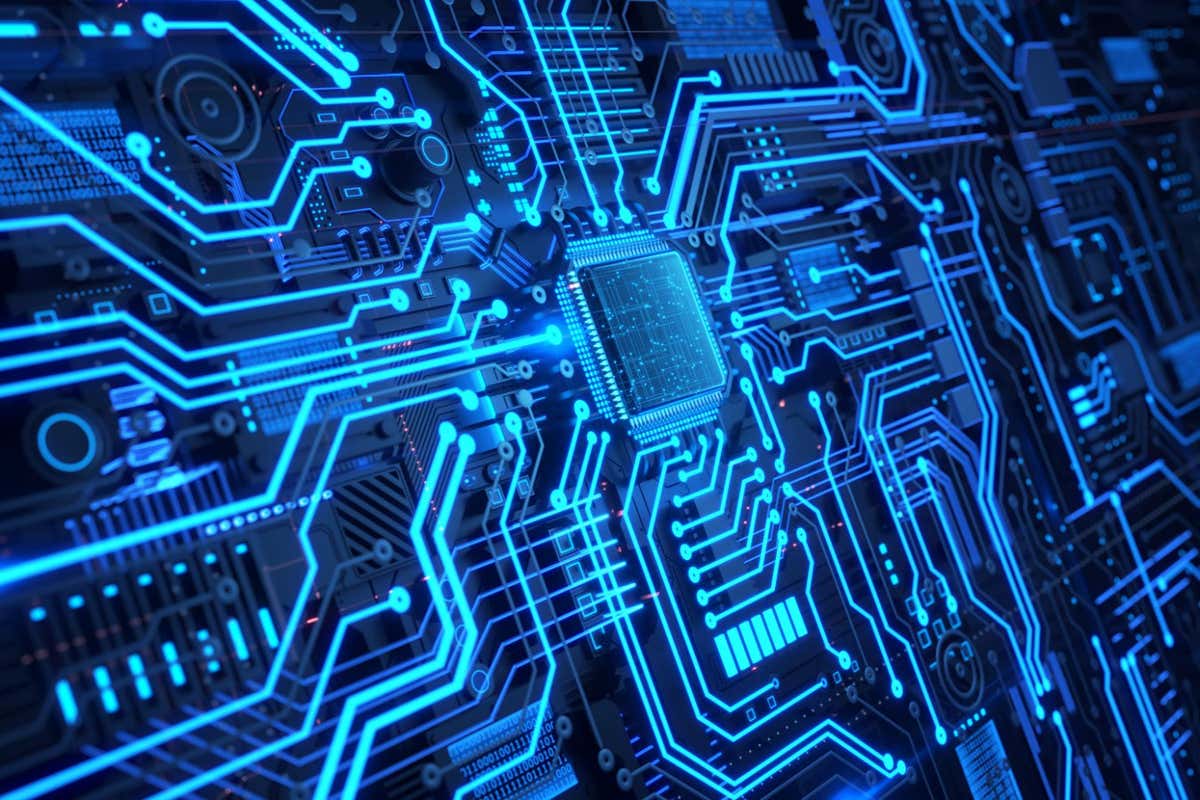Chip iphone technology is revolutionizing the way we use our smartphones, combining power and efficiency in one sleek package. From the first iterations to the latest advancements, Apple’s chips have not only enhanced performance but also redefined user experiences across generations. As we delve into the world of iPhone chips, we uncover their functionality, manufacturing processes, and the future that awaits.
The evolution of chip technology in iPhones has been a remarkable journey, marked by constant innovation. Each new model showcases improvements that significantly impact overall performance, enabling faster processing, enhanced graphics, and better energy efficiency. Understanding how these chips work and the manufacturing intricacies behind them reveals much about the smartphone’s capabilities that we often take for granted.
Chip Technology in iPhones

Chip technology has played a pivotal role in the evolution and enhancement of iPhones since their inception. Each new generation brings significant advancements that not only improve processing power but also influence the overall functionality and user experience of these devices. This article Artikels the functionality of the chip used in iPhones, traces the evolution of this technology across various models, and highlights how chips impact the performance of iPhones.
Functionality of the Chip Used in iPhones
The chip in iPhones serves as the brain of the device, processing instructions and managing operations. Apple’s custom-designed processors, known as the A-series chips, integrate a range of functionalities including CPU, GPU, and neural processing capabilities. These chips enable everything from basic operations like opening applications and browsing the internet to more complex tasks such as augmented reality (AR) and machine learning.
The A-series chips are built using advanced semiconductor technology, allowing for a higher transistor density which improves performance while reducing power consumption. The integration of multiple cores in the design ensures efficient task management, allowing the iPhone to run multiple applications smoothly without lag. Furthermore, features like Secure Enclave enhance security by providing a dedicated environment for sensitive data processing.
Evolution of Chip Technology in iPhone Models
The evolution of chip technology in iPhones reflects a consistent drive towards improved performance and efficiency.
– A4 (2010): The first chip used in the iPhone 4, it marked Apple’s entry into custom silicon and set the foundation for future models.
– A5 (2011): Found in the iPhone 4S, this chip introduced dual-core processing, doubling the processing power and improving graphics performance significantly.
– A6 (2012): Featured in the iPhone 5, the A6 chip offered a considerable performance boost with faster CPU and GPU speeds, enhancing gaming and media consumption.
– A7 (2013): The first 64-bit chip in a smartphone, the A7 provided enhanced performance, making the iPhone 5S a power player in mobile computing.
– A8 (2014): The A8 chip brought further enhancements in graphics performance and energy efficiency, supporting more complex applications and games.
– A9 (2015): Used in the iPhone 6S, the A9 chip featured advanced architecture that improved overall speed and battery life.
– A10 Fusion (2016): This chip marked a significant leap with its four-core design, optimizing performance for demanding tasks while conserving energy during lighter operations.
– A11 Bionic (2017): Introduced with the iPhone X, this chip included machine learning capabilities, facilitating features like Face ID and AR applications.
– A12 Bionic (2018): The A12 brought significant improvements in performance and efficiency, leading to enhanced gaming and multitasking experiences.
– A13 Bionic (2019): Focused on machine learning and computational photography, it further optimized performance and power consumption, making the iPhone 11 series a leader in mobile photography.
– A14 Bionic (2020): The first chip built on a 5nm process, providing even more power and efficiency while supporting 5G connectivity and advanced processing tasks.
– A15 Bionic (2021): Found in the iPhone 13 series, it enhanced GPU capabilities and battery life, solidifying the iPhone’s status in gaming and high-performance applications.
– A16 Bionic (2022): Featured in the iPhone 14 Pro models, it focused on advanced display capabilities and improved camera processing, ensuring top-tier performance.
Impact of the Chip on Overall Performance
The chip significantly influences the overall performance of an iPhone in terms of speed, efficiency, and capabilities. Enhanced processing power allows for faster application launches, smoother multitasking, and improved gaming experiences.
Key impacts include:
– Performance Improvements: Each new chip generation provides noticeable boosts in speed. For example, the A15 Bionic chip provides up to 50% more GPU performance than its predecessor, which is evident in graphics-intensive apps and games.
– Energy Efficiency: The advancements in chip technology contribute to longer battery life. The A14 Bionic’s efficiency allows devices to manage power better, resulting in longer usage between charges.
– Enhanced Features: The inclusion of dedicated machine learning cores has allowed for significant advancements in photography and AR applications. The computational capabilities of the A13 Bionic, for instance, enhance real-time photo processing and video recording.
– Future-Proofing: As software demands increase, the chips are designed to handle future updates and applications, ensuring longevity for the devices.
Overall, the continual advancement of chip technology in iPhones not only enhances user experience but also positions Apple at the forefront of mobile innovation.
Comparison of iPhone Chips

The evolution of iPhone chips has played a crucial role in enhancing performance, efficiency, and user experience. Each new generation of A-series chips brings improvements that cater to both everyday users and power users alike.
The A-series chips used in iPhones have been incrementally upgraded through various models, showcasing significant advancements in architecture and processing power. These improvements not only influence the speed and efficiency of the devices but also enhance graphics performance and machine learning capabilities, which are essential for modern applications and services.
Performance Metrics of Various iPhone Chips
To understand the differences in performance among the various A-series chips, a comparative analysis of their performance metrics is essential. The table below summarizes key specifications and performance benchmarks for several A-series chips used in different iPhone models.
| Chip Model | CPU Cores | GPU Cores | Neural Engine Cores | Benchmark Score (Geekbench) |
|---|---|---|---|---|
| A14 Bionic | 6 | 4 | 16 | 1600 (Single-Core), 4200 (Multi-Core) |
| A15 Bionic | 6 | 4 or 5 (depends on model) | 16 | 1700 (Single-Core), 4500 (Multi-Core) |
| A16 Bionic | 6 | 5 | 16 | 1900 (Single-Core), 4800 (Multi-Core) |
The implications of these chip differences on user experience are profound. For instance, the transition from A14 to A15 brought enhancements that reduced loading times and improved graphics rendering in gaming applications. The introduction of the A16 Bionic further optimizes performance in resource-intensive tasks, such as video editing and augmented reality applications.
With each new chip generation, users experience faster processing speeds, improved battery efficiency, and enhanced capabilities in AI-driven tasks. As applications continue to evolve, the architectural advancements in these chips allow for greater multitasking and improved overall device performance.
The A16 Bionic chip demonstrates Apple’s commitment to pushing the boundaries of mobile processing power, reaffirming its position as a leader in smartphone technology.
Manufacturing Process of iPhone Chips: Chip Iphone
The manufacturing process of iPhone chips is a complex and highly advanced procedure that combines cutting-edge technology with meticulous precision. These chips, including Apple’s A-series processors, are integral to the performance and functionality of iPhones, making the understanding of their production vital for appreciating the innovation behind these devices.
The journey of chip manufacturing begins with silicon wafers, which serve as the foundation for the chips. The process involves several intricate steps, including photolithography, etching, doping, and packaging. Each of these steps is crucial in shaping the chip’s architecture and ensuring its functionality.
Key Manufacturers Involved in Producing iPhone Chips
Several manufacturers play pivotal roles in the production of iPhone chips, with each contributing to different aspects of the manufacturing process. The collaboration between these manufacturers is essential for achieving the high standards expected from Apple products.
- Apple: Primarily responsible for the design of the chips, Apple develops the architecture and specifications for each new A-series processor.
- TSMC (Taiwan Semiconductor Manufacturing Company): As the leading semiconductor manufacturer, TSMC fabricates Apple’s chip designs, utilizing advanced technology nodes for efficient production.
- Samsung: Although primarily a competitor, Samsung has occasionally manufactured certain components for Apple’s chips, contributing to memory and display technologies.
- GlobalFoundries: Engaged in producing some of the older chip models, this company has historically supported Apple’s chipmaking efforts.
Challenges Faced in Chip Production for iPhones
The production of iPhone chips is not without its challenges. Several factors can influence the efficiency, cost, and quality of chip manufacturing, impacting the overall supply chain and product availability.
- Supply Chain Issues: Global events, such as the COVID-19 pandemic, have highlighted the fragility of supply chains, affecting the availability of raw materials and components.
- Technological Complexity: The ongoing advancement in semiconductor technology requires continuous investment in research and development, as well as manufacturing processes that can keep pace with these innovations.
- Manufacturing Costs: The high cost of advanced manufacturing facilities and processes can lead to increased prices for consumers, impacting Apple’s pricing strategy.
- Market Competition: The fierce competition in the semiconductor market necessitates rapid technological improvements and innovation, placing additional pressure on manufacturers.
“The semiconductor industry is at the heart of modern technology, but it faces ongoing challenges that require agility and innovation to overcome.”
Future of iPhone Chip Technology

The future of iPhone chip technology holds immense promise, as Apple continues to innovate and advance its silicon capabilities. With each new iteration, the integration of advanced features and improved performance is expected to enhance user experience and transform the functionality of future iPhones. As we look ahead, notable advancements in chip technology will likely redefine what a smartphone can do, paving the way for smarter, more efficient devices.
Emerging chip technologies focus on improving processing power, energy efficiency, and capabilities for artificial intelligence (AI) and machine learning (ML). The anticipated developments in chips will not only make devices faster and more responsive but also enable features that cater to an increasingly digital and connected lifestyle. The integration of 5G technology, for instance, will push the boundaries of mobile connectivity, facilitating quicker data transfer and seamless integration with other smart devices.
Anticipated Advancements in iPhone Chips, Chip iphone
The upcoming iPhone chips are expected to integrate several groundbreaking advancements that will significantly enhance performance and capabilities. These anticipated advancements include:
– Improved CPU Architecture: Future chips are likely to adopt more sophisticated CPU architectures, providing greater computational power while consuming less energy. This will result in faster app load times and more efficient multitasking without draining battery life.
– Enhanced Graphics Performance: With the rise of mobile gaming and augmented reality (AR) applications, improvements in graphics processing units (GPUs) will be critical. Future iPhone chips may incorporate dedicated GPU cores to deliver stunning visuals and smoother gameplay experiences.
– AI and Machine Learning Integration: The incorporation of specialized neural processing units (NPUs) will allow iPhone chips to handle AI-related tasks more efficiently. This enhancement will enable features such as advanced photography, real-time language translation, and personalized user experiences.
– Advanced 5G Capabilities: As the 5G network matures, upcoming iPhone chips will likely support more advanced 5G functionalities. This includes improved connectivity speeds and lower latency, which will be essential for applications like cloud gaming and high-definition video streaming.
The following table summarizes potential features based on these trends in future chip technology:
| Feature | Description | Impact on Functionality |
|---|---|---|
| Enhanced CPU Architecture | Utilization of cutting-edge CPU designs for improved performance | Faster processing, better multitasking |
| Advanced GPU Support | Increased graphics performance for gaming and AR | Better visual fidelity and smoother experiences |
| AI Processing Capabilities | Dedicated NPUs for efficient AI tasks | Improved features in photography and smart assistants |
| Robust 5G Features | Support for advanced 5G functionalities | Faster downloads and real-time services |
The future of iPhone chip technology is poised to bring remarkable advancements that will redefine the smartphone landscape. With each generation, Apple’s commitment to innovation assures users of a continually improving experience, driven by groundbreaking chip capabilities.
Expert Answers
What is the primary function of the chip in an iPhone?
The chip in an iPhone primarily functions to process data, manage system operations, and enhance the overall performance of applications and features.
How has chip technology evolved in iPhones?
Chip technology has evolved from the initial basic processors to highly advanced A-series chips that offer superior processing power, energy efficiency, and improved graphics capabilities.
Who manufactures the chips used in iPhones?
Apple designs its chips, but they are manufactured by companies like TSMC (Taiwan Semiconductor Manufacturing Company) which provide the necessary fabrication technology.
What challenges are faced in the production of iPhone chips?
Challenges include maintaining high standards of quality, managing production costs, and keeping up with the rapid pace of technological advancements.
What future advancements can we expect in iPhone chips?
Future advancements may include enhanced AI capabilities, improved energy efficiency, and integration of new technologies like 5G and augmented reality features.
The Samsung Galaxy S10+ stands out with its stunning display and powerful performance, making it a favorite among smartphone enthusiasts. Its advanced camera system captures breathtaking photos, while the sleek design ensures it fits comfortably in your hand. With features like wireless charging and exceptional battery life, this device is truly a flagship model worth considering.
For those looking for an affordable yet feature-rich device, the Samsung Galaxy F series offers impressive specifications without breaking the bank. Ideal for users who want a reliable smartphone, the Galaxy F combines performance with style, making it a great choice for everyday use. Its vibrant display and capable cameras enhance the user experience significantly.